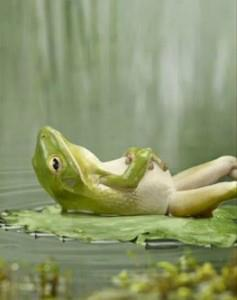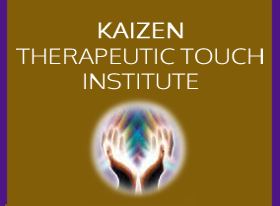 You can get stressed by a million different things all of which act as your system’s information up-setters and distorters.
You can get stressed by a million different things all of which act as your system’s information up-setters and distorters.
Stress is your experience of your body’s fight, flight or freeze response to stressors, whether internal (feelings, perceptions, beliefs), or external (temperature, sound, aggression) and is cause of 80% or more of today’s illnesses.
When your carrying capacity, the load you can comfortably bear without straining your energy reserves, is exceeded, your body’s physical and mental alarm bells go off activating the stress response, experienced as an instantaneous surge in:
- Heart rate
- Blood pressure
- Sweating
- Breathing,
- Metabolism and a tensing of muscles.
 To Manage Stress You Need to Know your Energy Traps
To Manage Stress You Need to Know your Energy Traps
The Stressor is the stimulus that provokes in you a stress response. Stressors are external to you. The source of stressor can be job or workplace related, family, interpersonal or environmental. Identifying the stressor and determining whether it is within or outside of your control or influence is the first step to effective stress management.
Your Reaction to the Stressor is another source of stress. How you interpret and react to the stressor has a big impact on how your body’s responds physiologically to the situation and your experience of it both physically and mentally. For example, it is your perception of the nature and extent of threat that determines the body’s hormonal response.
Your Body’s Conditioned Response to the Stressor – Your habits of response affect or condition your body’s physiology over time. Unmanaged stress goes to the part of you that is most vulnerable, eventually showing up in your physical body as dis-ease.
 An intelligent response to counteracting the habitual stress response is to learn and cultivate the relaxation response, mindfully. As the ancient Chinese Proverb so beautifully expresses, “Relaxation is what you are. Tension is what you think you should be.”
An intelligent response to counteracting the habitual stress response is to learn and cultivate the relaxation response, mindfully. As the ancient Chinese Proverb so beautifully expresses, “Relaxation is what you are. Tension is what you think you should be.”
It is simply not possible to be both relaxed and tense at the same time. Learning simple relaxation techniques whether for high performance, stress reduction and pain management is based on the concept of the mind-body connection. Whatever helps the body relax also relaxes the mind and vice versa and enhances your overall capacity and resilience.
The relaxation response reduces the effects of stress on the body and mind and creates the conditions that enable your human system to rebalance itself. The relaxation response, first seen as a deep sigh, is known to:
- Slow the breathing pattern
- Slow the heart rate
- Decrease blood pressure
- Improve circulation
- Reduce anxiety and apprehension
- Reduce muscle spasms
- Reduce fevers
- Stimulate endorphins (a pleasure hormone produced by the pituitary gland)
- Slow the metabolism and improve digestion
- Facilitate the immune system’s defense
Embodied Wisdom – Your Body Loves You!
 Awareness is the greatest agent of change. Eckhart Tolle
Awareness is the greatest agent of change. Eckhart Tolle
What is Wellness? When you are healthy and relaxed, life energy flows freely and unobstructed, through you. The idea of rebalancing the system after a stressful incident is based on an understanding that the system has a blueprint for optimum functioning and that when you deeply relax and centre yourself, you get out of our own way and let the body’s natural instinct for health and healing take over to re-establish balance and flow within its current capacity.
Your body, mind and spirit are one – an open, complex and multi-dimensional system. Energy vitalizes the body, nourishes the soul, opens the heart and lifts the spirit.
As you learn to listen to your body, you will become increasingly aware of your feelings as a personal feedback system and your body’s primary mode of communications.
By tuning in and listening attentively to what your body is experiencing, without judgment, you engage in the process that can help you avoid the pain and suffering that results from not heeding the early warning signs you failed to notice.
Mindfulness coaching, empowers the individual to awaken to what deeply matters to them, identify stressors and navigate challenging situations and take responsibility for lifestyle and behaviour choices. This pro-active approach inevitably leads to a process of reclaiming trapped energy and restoring balance to improve their wellbeing, performance and satisfaction.
 Self-care practices that create awareness, self-acceptance and cultivate the ability to relax include:
Self-care practices that create awareness, self-acceptance and cultivate the ability to relax include:
- mindful breathing and centering exercises
- guided visualization and imagery
- journaling, contemplative and reflective activities.
Massage, yoga, going for walks in nature, taking time to appreciate, wonder and enjoy are all relaxation and renewal strategies.
Physical training and coaching that balances stress and recovery, isometric exercises and progressive muscle relaxation are simple and effective ways to relax the body. Recognizing the body’s need for water to hydrate, eliminate toxins and renew cannot be overemphasized.
Mindfulness training and coaching can help you build foundational wellness practices into your everyday lifestyle to create awareness and cultivate inner calm, peace and a quiet resilience. Mindfulness meditation practice trains the mind and helps you gain control over unconscious, automatic reactions and habitual patterns of thought, feeling and behaviour and helps them transcend contradictions and fears to integrate their experiences more fully.
A good place to being is with a Healing Pause. You can download a Guided Meditation I made for this purpose. Stopping to recalibrate, release what you no longer need and want and connect with your breathing pattern.
Breath is the bridge which connects life to consciousness, which unites your body to your thoughts. Thich Nhat Hanh
As a coach, I help my clients become aware of their conditioned responses to the stressors in their life at home and at work. Coaching helps them create an inner safe space allowing them to gain awareness and consider their options before reacting so they can create a new intentional responses to challenging situation. Doing so allows them to stay present to the moment and give expression to their values, rather than reacting based on past patterns of response.
Getting clear on who you truly are and what truly matters to you helps you create a framework by which you can manage expectations and navigate through life’s ups and downs, with ease and joy. It’s what our 12 Steps to Becoming an Authentic, Mindful Leader is designed to help you do.
This article was first published in the July 2013 edition of Worldwide Coaching Magazine





